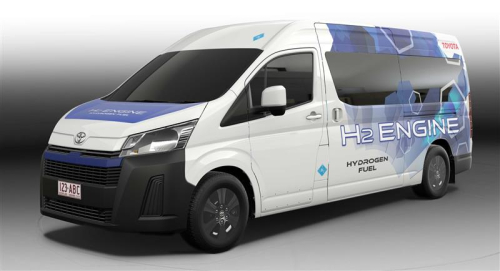The liquid hydrogen-powered Corolla, which first competed in the 24 Hours Race in May, has evolved even further in the three months since the Round 4 Super Taikyu Race at Autopolis in July.
Engine performance. Liquid hydrogen pumps must generate high fuel pressure with stability to achieve high output. Toyota improved the pressure boosting performance and durability of the pumps, which have been challenges, to achieve the same level of output as gasoline and gaseous hydrogen engines.
Cruising range. The maximum number of laps that could be driven on a single hydrogen fill-up at the Fuji 24 Hours Race in May was 16. Toyota made improvements such as better accuracy in determining hydrogen tank fullness, reducing the amount of boil-off gas by reducing the heat entering the tank, and optimizing fuel injection when the gas pedal is not fully depressed. As a result, the company is aiming to achieve 20 laps per fill-up in this race.
Vehicle weight. The hydrogen-powered Corolla is equipped with many features that prioritize safety and security first and foremost. Toyota identified parts that could be made lighter using the knowledge gained from driving experience while keeping this emphasis on safety and security and reduced their weight by adjusting factors such as thickness and number of parts. As a result, Toyota was able to reduce the weight of the tank, safety and boil-off gas valves, roll cage, high-pressure hydrogen system parts, and other components to achieve a vehicle weight of 1,860 kg—50 kg lighter than the 1,910 kg it weighed at the Autopolis race.
CO2 capture. As a trial, Toyota will install a CO2 absorption device at the inlet to the air cleaner; a CO2 separation device that uses heat from engine oil will be installed next to the air cleaner. The separated CO2 will be captured in a small tank filled with an absorbent. The equipment used to absorb, separate, and capture CO2 from the atmosphere will use filters coated with an absorbent developed by Kawasaki Heavy Industries, Ltd. that can release CO2 at lower temperatures than conventional absorbents, thereby increasing CO2 capture efficiency.

Hydrogen-powered HiAce to be used for feasibility testing in Australia
Hydrogen HiAce in Australia. Toyota has installed the hydrogen engine in a commercial HiAce to conduct on-road feasibility testing operated by companies on public roads in Australia. In doing so, Toyota says it will hone the hydrogen engine technology it continues to refine through participation in the Super Taikyu series even further toward practical application.